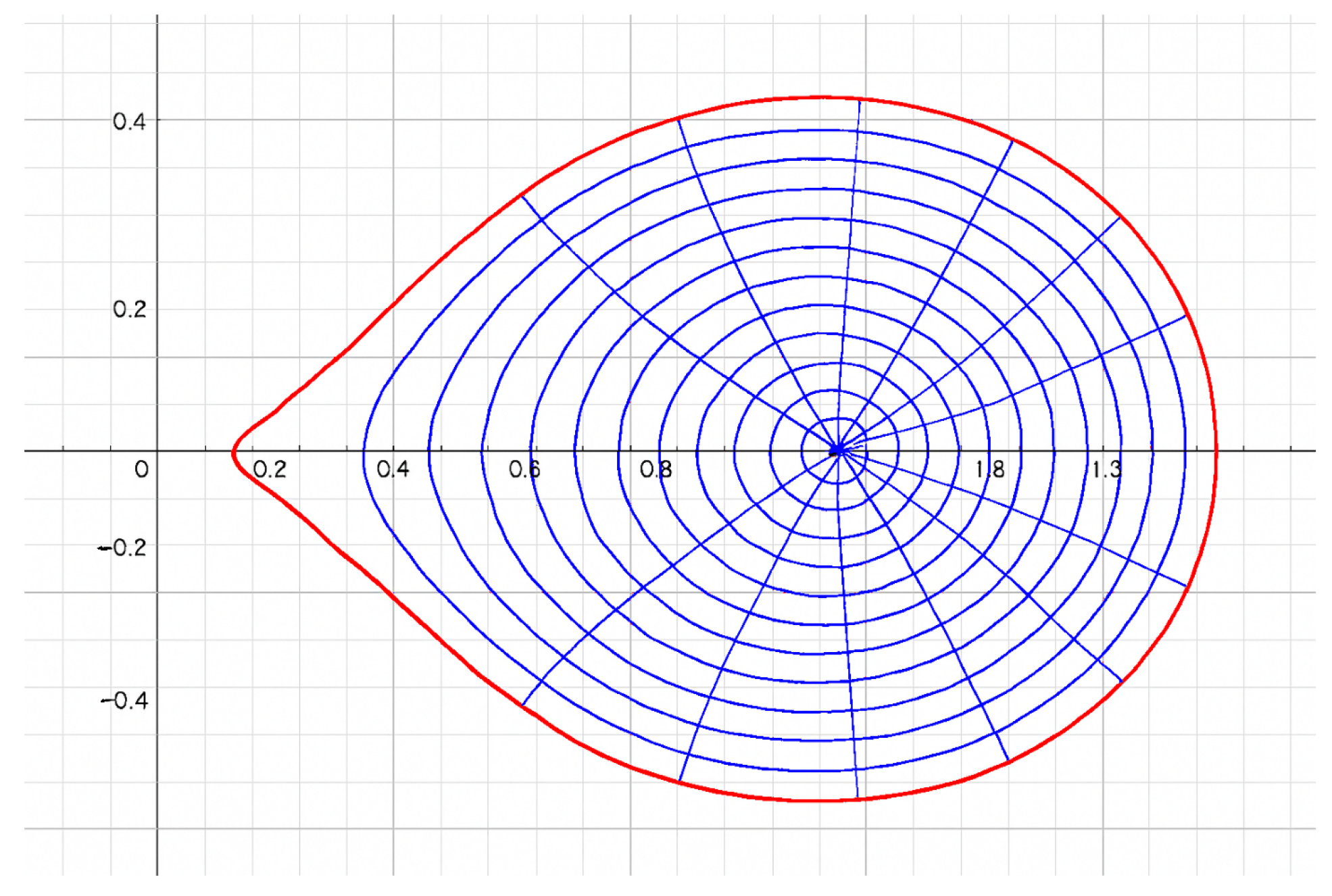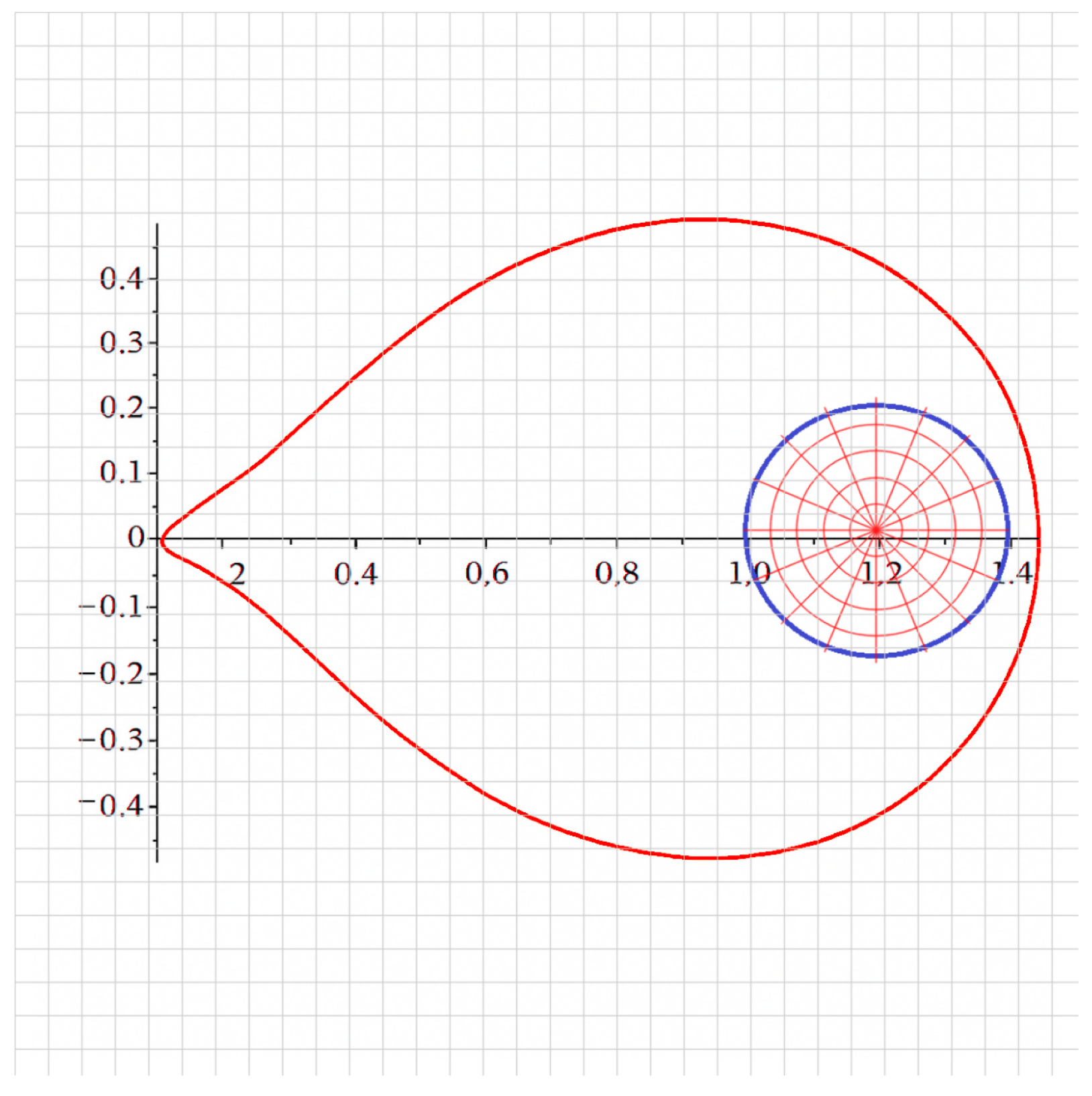On Bi-Univalent Function Classes Defined via Gregory Polynomials
Abstract
1. Introduction
2. Main Results
- Equating coefficients of like powers of and x in (7) and (8), and using (3), we get
3. Fekete–Szegö Functional for the Function Class
4. Particular Cases
5. Conclusions
Author Contributions
Funding
Data Availability Statement
Conflicts of Interest
References
- Robertson, M.S. On the theory of univalent functions. Ann. Math. 1936, 37, 374–408. [Google Scholar] [CrossRef]
- Goodman, A.W. Univalent Functions; Mariner: Tampa, FL, USA, 1983. [Google Scholar]
- Study, E. Vorlesungen über ausgewählte Gegenstände der Geometrie, Zweites Heft; Konforme Ab bildung Einfach-Zusammenhängender Bereiche; Druck und Verlag von B.G. Teubner: Leipzig, Germany; Berlin, Germany, 1913. [Google Scholar]
- Duren, P.L. Univalent Functions; Grundlehren der Mathematischen Wissenschaften, 259; Springer: New York, NY, USA, 1983. [Google Scholar]
- Miller, S.S.; Mocanu, P.T. Differential Subordinations: Theory and Applications; CRC Pres: Boca Raton, FL, USA, 2000. [Google Scholar]
- Lewin, M. On a coefficient problem for bi-univalent functions. Proc. Am. Math. Soc. 1967, 18, 63–68. [Google Scholar] [CrossRef]
- Brannan, D.A.; Clunie, J.G. Aspects of contemporary complex analysis. In Proceedings of the NATO Advanced Study Institute held at the University of Durham, Durham, UK, 1–20 July 1979; Academic Press: New York, NY, USA; London, UK, 1980. [Google Scholar]
- Netanyahu, E. The minimal distance of the image boundary from the origin and the second coefficient of a univalent function in |z|<1. Arch. Ration. Mech. Anal. 1969, 32, 100–112. [Google Scholar]
- Kamble, P.N.; Shrigan, M.G. Initial coefficient estimates for bi-univalent functions. Far East J. Math. 2018, 105, 271–282. [Google Scholar] [CrossRef]
- Kamble, P.N.; Shrigan, M.G. Coefficient estimates for a subclass of bi-univalent functions defined by Sălăgean type q-calculus operator. Kyungpook Math. J. 2019, 58, 677–688. [Google Scholar] [CrossRef]
- Yousef, F.; Al-Hawary, T.; Murugusundaramoorthy, G. Fekete-Szegö functional problems for some subclasses of bi-univalent functions defined by Frasin differential operator. Afr. Mat. 2019, 30, 495–503. [Google Scholar] [CrossRef]
- Srivastava, H.M.; Murugusundaramoorthy, G.; Bulboacă, T. The second Hankel determinant for subclasses of bi-univalent functions associated with a nephroid domain. Rev. Real Acad. Cienc. Exactas Físicas Nat. Ser. Matemáticas 2022, 116, 145. [Google Scholar] [CrossRef]
- Fekete, M.; Szegö, G. Eine Bemerkung Über Ungerade Schlichte Funktionen. J. Lond. Math. Soc. 1933, 1, 85–89. [Google Scholar] [CrossRef]
- Bansal, D.; Prajapat, J.K. Certain geometric properties of the Mittag-Leffler functions. Complex Var. Elliptic Equ. 2016, 61, 338–350. [Google Scholar] [CrossRef]
- Gorenflo, R.; Kilbas, A.A.; Mainardi, F.; Rogosin, S. Mittag-Leffler Functions. Related Topic and Applications, 2nd ed.; Springer: Berlin/Heidelberg, Germany, 2020. [Google Scholar]
- Haubold, H.J.; Mathai, A.M.; Saxena, R.K. Mittag-Leffler functions and their applications. J. Appl. Math. 2011, 2011, 298628. [Google Scholar] [CrossRef]
- Srivastava, H.M.; Tomovski, Z. Fractional calculus with an integral operator containing a generalized Mittag-Leffler function in the kernel. Appl. Math. Comput. 2009, 211, 198–210. [Google Scholar] [CrossRef]
- Mittag-Leffler, M.G. Sur la nouvelle function eα(x). C. R. Hebd. Séances Acad. Sci. 1903, 137, 554–558. [Google Scholar]
- Mittag-Leffler, M.G. Une généralisation de l’intǵrale de Laplace-Abel. C. R. Hebd. Séances Acad. Sci. 1903, 136, 537–539. [Google Scholar]
- Wiman, A. Über den Fundamental satz in der Theorie der Funcktionen E(x). Acta Math. 1905, 29, 191–201. [Google Scholar] [CrossRef]
- Wiman, A. Über die Nullstellun der Funcktionen E(x). Acta Math. 1905, 29, 217–234. [Google Scholar] [CrossRef]
- Noreen, S.; Raza, M.; Malik, S.N. Certain geometric properties of Mittag-Leffler functions. J. Inequal. Appl. 2019, 2019, 94. [Google Scholar] [CrossRef]
- Berezin, I.S.; Zhidkov, N.P. Computing Methods; Pergamon, North Atlantic Treaty Organization and London Mathematical Society: Oxford, UK, 1965. [Google Scholar]
- Kazimoǧlu, S.; Deniz, E.; Srivastava, H.M. Sharp coefficients bounds for starlike functions associated with Gregory coefficients. Complex Anal. Oper. Theory 2024, 18, 6. [Google Scholar] [CrossRef]
- Phillips, G.M. Gregorys method for numerical integration. Am. Math. Mon. 1972, 79, 270–274. [Google Scholar] [CrossRef]
- Srivastava, H.M.; Cho, N.E.; Alderremy, A.A.; Lupas, A.A.; Mahmoud, E.E.; Khan, S. Sharp inequalities for a class of novel convex functions associated with Gregory polynomials. J. Inequal. Appl. 2024, 2024, 140. [Google Scholar] [CrossRef]
- Zaprawa, P. Estimates of initial coefficients for bi-Univalent functions. In Abstract and Applied Analysis; Wiley: Hoboken, NJ, USA, 2014; 6p. [Google Scholar] [CrossRef]


Disclaimer/Publisher’s Note: The statements, opinions and data contained in all publications are solely those of the individual author(s) and contributor(s) and not of MDPI and/or the editor(s). MDPI and/or the editor(s) disclaim responsibility for any injury to people or property resulting from any ideas, methods, instructions or products referred to in the content. |
© 2025 by the authors. Licensee MDPI, Basel, Switzerland. This article is an open access article distributed under the terms and conditions of the Creative Commons Attribution (CC BY) license (https://creativecommons.org/licenses/by/4.0/).
Share and Cite
Aldawish, I.; Shrigan, M.G.; El-Deeb, S.; Srivastava, H.M. On Bi-Univalent Function Classes Defined via Gregory Polynomials. Mathematics 2025, 13, 3121. https://doi.org/10.3390/math13193121
Aldawish I, Shrigan MG, El-Deeb S, Srivastava HM. On Bi-Univalent Function Classes Defined via Gregory Polynomials. Mathematics. 2025; 13(19):3121. https://doi.org/10.3390/math13193121
Chicago/Turabian StyleAldawish, Ibtisam, Mallikarjun G. Shrigan, Sheza El-Deeb, and Hari M. Srivastava. 2025. "On Bi-Univalent Function Classes Defined via Gregory Polynomials" Mathematics 13, no. 19: 3121. https://doi.org/10.3390/math13193121
APA StyleAldawish, I., Shrigan, M. G., El-Deeb, S., & Srivastava, H. M. (2025). On Bi-Univalent Function Classes Defined via Gregory Polynomials. Mathematics, 13(19), 3121. https://doi.org/10.3390/math13193121






